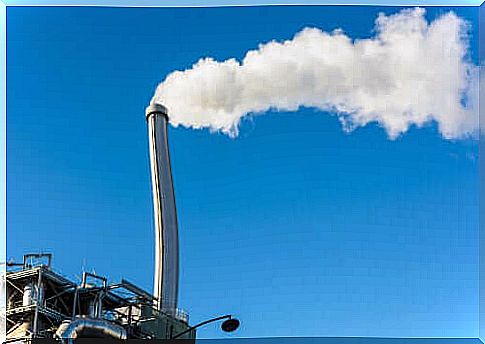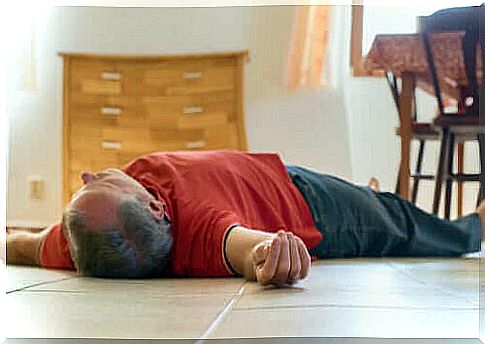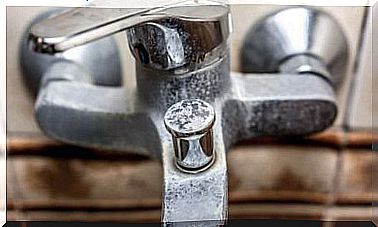First Aid For Carbon Monoxide Poisoning

Carbon monoxide is a colorless, odorless and tasteless extremely toxic gas produced by the combustion of fuels such as gasoline, wood and coal. This combustion provides fuel for, among other things, cars, gas stoves and heating systems. Carbon monoxide poisoning is very serious.
This type of gas is a silent killer that poisons about 1,500 people a year, of which up to 200 of them die. Most of these cases can be avoided as they are mainly due to improper use of equipment. Either that or poor use of gas equipment that is in inappropriate environments with poor ventilation.
Carbon monoxide poisoning is a medical emergency that can go unnoticed. Read on to find out everything you should know about it and what to do if it happens around you.
Carbon monoxide poisoning
People accidentally inhale this gas in their homes or during some of their daily activities such as cooking or heating a room. This is because the machines they use may either have a bug in them or may not have been properly maintained. Likewise, there are times when people use it as a method of suicide.
What does carbon monoxide do to our bodies?
Cells called erythrocytes, also known as red blood cells, usually circulate in our blood. These blood cells contain a protein called hemoglobin, which is responsible for transporting oxygen. This protein is responsible for collecting the oxygen we get into the lungs and then sending it out to tissues where the blood circulates.
Carbon monoxide poisoning is caused by the large amount of hemoglobin relative to oxygen. Because of this, carbon monoxide binds to hemoglobin and does not allow oxygen to enter the bloodstream. The tissues therefore run out of oxygen, causing what is technically referred to as tissue hypoxia.

Symptoms of carbon monoxide poisoning
The degree of symptoms depends on the amount of carbon monoxide that was inhaled and how long one has been exposed. There are two types of carbon monoxide poisoning:
- Acute poisoning occurs when a person inhales this gas in large quantities.
- It is chronic poisoning when people inhale low concentrations of carbon monoxide for a long time.
The symptoms are caused by a lack of oxygen in the tissues, and these are some of the most common:
- Headache.
- Dizziness.
- Weakness.
- Nausea and vomiting.
- Chest pain.
- Cardiac arrhythmia.
- Respiratory problems.
- Confusion.
- Drowsiness.
If not treated in time, carbon monoxide poisoning will lead to coma. It is therefore dangerous for people who are exposed to it, especially while sleeping. This is because they like to brain damage that can not be repaired or even die before anyone notices that there is a problem.
The symptoms may not be so obvious in chronic poisoning, and severe long-term damage may occur. These occur in the brain and are primarily:
- Problems learning and retaining information in memory.
- Emotional disorders that can lead to depression.
- Problems with senses and motor skills such as, among other things, problems with movement and loss of senses.
In most cases, these symptoms occur without the person realizing that the cause is gas. This is because, as we mentioned, it is odorless, colorless and tasteless.

This should be done in case of poisoning
If you think you may have been poisoned with carbon monoxide, do the following:
- Leave the room where there is gas.
- Open doors and windows to get fresh air and dilute the carbon monoxide in the air.
- Switch off stoves, ovens, heaters and other appliances of this type.
When you are away from the source of poisoning, call the nearest emergency room. Health professionals can perform tests to check the level of carbon monoxide in your blot and recommend immediate treatment.
Treatment at the hospital
The treatment consists of introducing oxygen into the blood to flush the carbon monoxide away from the hemoglobin and replace it with oxygen. They usually administer this oxygen through a mask placed over the nose and mouth. Thanks to this, oxygen reaches the tissues.
Pressure chamber
In some cases, doctors will place an affected person in a pressure chamber. This treatment involves inhaling oxygen into a chamber at a much higher pressure than normal. It speeds up the replacement of carbon monoxide with oxygen.
How to prevent carbon monoxide poisoning
According to the Center for Disease Control and Prevention , the following reservations can be made:
- Properly install and maintain all appliances that use fuel.
- Check and clean the chimneys and stoves every year.
- Have a competent technician check your stoves and water heaters annually.
- Only use heaters that use fuel but do not have an exhaust system when you are awake. Keep an eye on them and try to maintain good ventilation in the room.
- You should regularly check your car’s exhaust system for faults and blockages, especially in winter.
As the last and most important thing, one should install a battery powered carbon monoxide alarm in one’s home. Do not forget to check the batteries every time the clock is set forward or backward in the fall and spring. If the alarm goes off, leave the home and call the emergency center.









